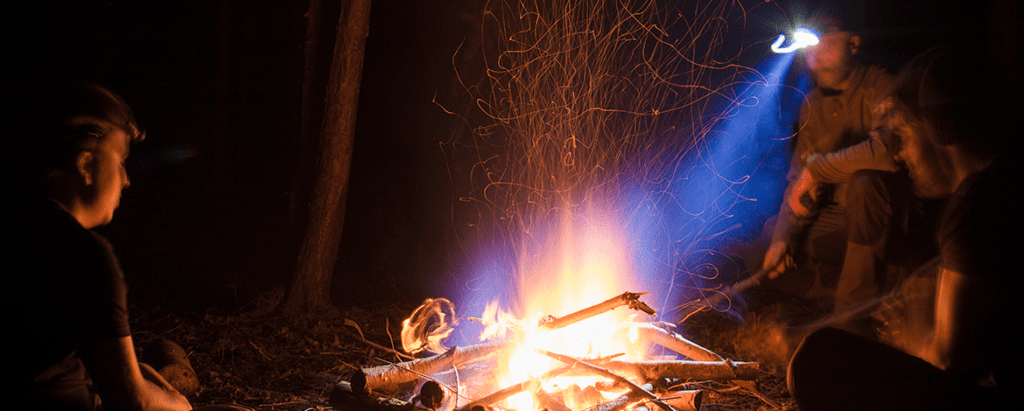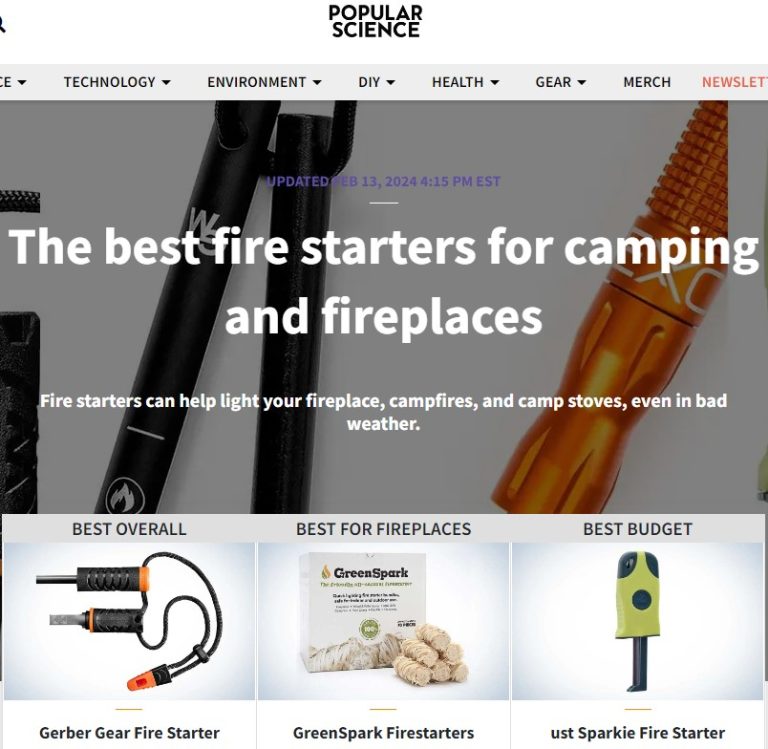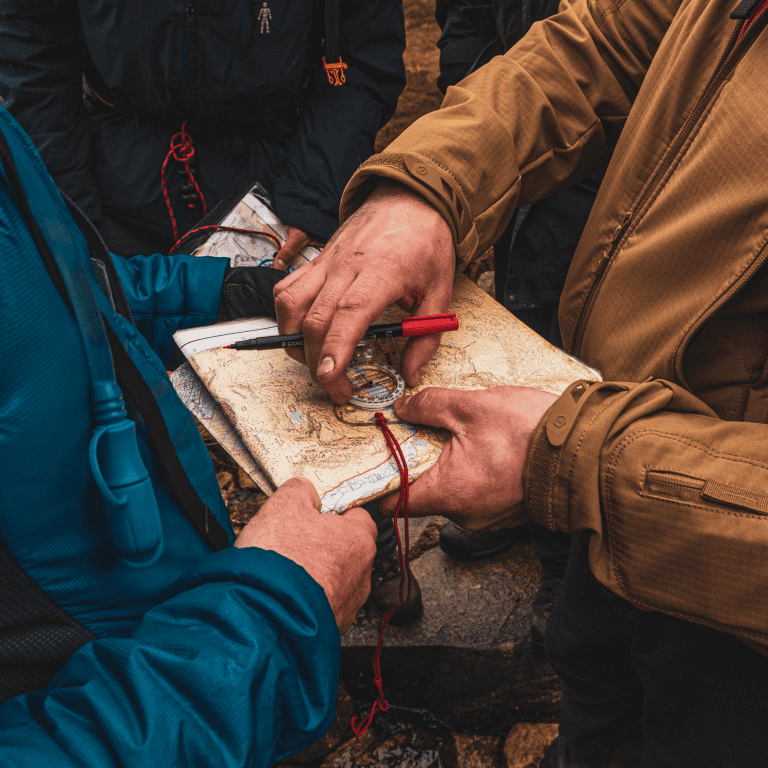
Synthetic fabrics and campfires - how to deal with sparks
10th January 2022
Waterproofs, Down Jackets and Campfires
A few weeks ago I sent out the joining information for our January Bushcraft Basics course. It was an email containing all of the information you would expect – where to come to, what time to arrive… and what to bring. The kit list is fairly short, as you would expect for a one-day course. But one item has more information alongside than any other – the outer shell layer, the waterproof one.
What I am trying to convey to the reader in that accompanying line of text is that they will NEED a waterproof layer (it is taking place in Wales, after all), but they shouldn’t bring their finest, most expensive GoreTex or similar breathable-membrane jacket. Because they will probably leave with more holes in it than they arrived with…
It’s something that comes up enough in conversation to make it worth writing a post about it, so here you go.
Angering the Gods of Fire
It works like this; you sit down next to your campfire, the one you just lit after at least 30 minutes of struggle with a ferrocerium rod and a bit of birch bark issued to you from our blue barrel. You’re relieved. Happy. Satisfied with the fruits of your labours. Then a small pocket of pressurised gas trapped in one of the logs suddenly explodes, emitting a tiny shower of sparks. One of those sparks travels in a delicate arc, glowing away as it flies across the gap between your body and the fire, and lands on your arm or shoulder.
In an ideal world it will have landed on something made from cotton or wool – a ‘natural fibre’, or at least a fabric that contains a lot of natural material (like polycotton). These fibres do not combust easily, and a solitary spark will not have too much of an effect. It will most probably just die out, quickly cooling and becoming just another speck of grime in the patina of your battered outer layer.
What you don’t want to happen is for that spark to land on a ‘synthetic fabric’ of some type, like GoreTex, eVent or one of the hundreds of other brand names and ‘technologies’ that outdoor gear manufacturers list to try and sell you stuff. If that hot, glowing spark lands on one of these oil-based layers then it will quite likely grab hold and start to melt the fabric, burning a hole into it.
Your expensive, super-waterproof, extremely expensive shell layer has now started its inevitable journey to becoming a wearable colander. Your fleece now has a hard, shiny spot where the pile melted, and your down jacket is starting to leak feathers from a brand-new hole.
Preparing for the spark
What we try to suggest is that, where possible and practical, you should try to avoid having mission-critical pieces of expensive waterproof clothing near campfires. If you are going to be wafting around near naked flames and showers of sparks then either wear an older, already battered waterproof or fleece – or choose something made from cotton, canvas or even wool. I love using my Helikon Tex Woodsman as a protective outer layer for this kind of thing – it’s by no means waterproof, but by ‘eck it’s tough.
Avoiding the spark entirely
Prevention is better than cure in most cases, and there will be occasions when you are stuck with the gear you have – e.g. expeditions where your kit is limited and has to perform multiple roles, or a canoe drycag. In these situations it would be better to avoid the event entirely and stop sparks from flying out of the fire.
You can do this in a number of ways:
- Choose your wood wisely – some woods will spit and be sparkier than others. Partly due to moisture levels, partly due to just the chemical composition of that type of cellulose fibre. Coniferous softwoods (pines, spruces, firs etc) will tend to ‘pop’ and emit rogue sparks, and Horse Chestnut is notorious for throwing shrapnel outwards when burning. Drier wood will tend to spit less, but the type of wood seems to be the important factor.
- Stop fiddling with it – anyone who has spent a few hours managing a campfire knows that occasionally you will need to poke it with a stick. I get it; it’s part of the ritual, and it can be genuinely necessary for rearranging firewood or regulating the ‘burn’. The unfortunate side effect is the shower of sparks that is thrown up from the sudden disturbance, and the more you poke it the more sparks you get. So if you’re trying to avoid sparks you need to keep that disturbance to a minimum – or at least use a stick that’s long enough to keep you out of the firing line.
- Beware of wind direction and your kit placement – if the wind is blowing across your camp then you have ¾ of a circle where you can safely hang your kit without it being bathed in fire and sparks. You can use this information to arrange your camp accordingly and to set out your tarp, drying line and away from potential damage.
While we are talking about your camp – it’s not just the synthetic fabrics on waterproofs, fleeces or insulated jackets. Consider what a spark is going to do to drybags, tent flysheets, tarps, sleeping bags, bivvy bags or any of the dozen or so essential and flammable items in your pack.
Dealing with the aftermath
If you hang around campfires long enough then something will get tagged by a stray spark or ember – be it a garment, a tent or even a rucksack or drybag. There are a few products available that will help with a makeshift repair, and it’s always worth carrying a field repair kit if you’re heading out for more than a night or so.
I have used, at different times:
- McNett Tenacious Tape – sticks to most fabrics and can be trimmed to size. Fairly expensive for the size of the roll, but use it sparingly.
- Duck Tape mini rolls – small enough to keep in your pack, but still versatile enough to use for repairs and about a dozen other uses.
- Scapa Tape (aka ‘Sniper Tape’) – stupidly sticky and strong, not waterproof as such but great for repairing tears and larger holes. More suited to home repairs where you aren’t looking for a cosmetic finish….
Some fabrics can be stitched together, but waterproof fabrics might need an application of seam sealing compound on top of the stitched area. More modern, single layer waterproof fabrics will be more effectively repaired with a suitable patching kit.
If you’re going to have a campfire then you’re inevitably going to have sparks, but at least you can do something about it through some good decisions and a bit of planning.
A Mountain Leader with over a decade of experience across the UK and overseas, Richard is our Lead Instructor and a partner in Original Outdoors. He is a specialist in temperate wilderness skills and the wild foods of the British Isles, and also works as a consultant for various brands and organisations. Richard lives in North Wales.
A Life more Wild.
A Life More Wild is the philosophy which underpins everything we do.
It encompasses practical skills, personal development, community learning and a journey to live more intentionally.





